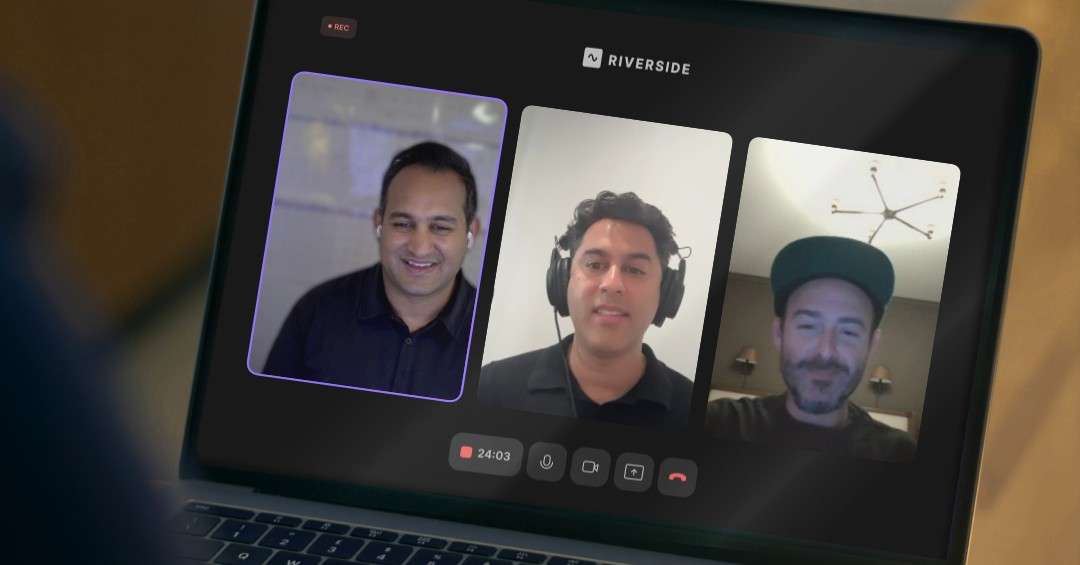In the fast-moving world of fashion, building something that lasts is no small feat. That’s why the story of Brian Hecht, founder of the iconic Show & Tell Trade Show, is such a compelling one. From his early days growing up in the heart of New York’s garment district to building a trade show that drew in brands like K-Swiss and Ed Hardy, Brian’s journey is filled with lessons for business owners, especially those navigating retail, manufacturing, or fashion.
In this episode of “Letters of Intent,” hosts Pankaj Raval and Sahil Chaudry of Carbon Law Group sit down with Brian to explore how he built a trade show empire—and the legal and entrepreneurial insights that helped him do it.
Let’s break down what every founder can learn from his story.

Born into the Business: Fashion Roots Run Deep
Brian didn’t just stumble into fashion—he was born into it. His family ran a successful garment manufacturing business in New York City, and he grew up absorbing everything from production runs to price negotiations. That early exposure taught him two things: the power of relationships and the importance of knowing your numbers.
It’s a reminder that even if your passion starts with creativity, the business side will always matter.
“I saw early on how much success came from persistence,” Brian says. “It’s not just who you know. It’s who you follow up with—again and again.”
Sales: The Real Driver of Fashion Success
While many creatives get caught up in design, Brian emphasizes that sales is what makes the wheels turn. Show & Tell became a massive success not just because it showcased trendy brands, but because it helped those brands move product. His mission was simple: create a show where deals actually got done.
He shares stories of brands that landed major retailers like Nordstrom because of connections made at the show.
If you’re building a fashion brand, you need more than style. You need structure—and a strategy for how to pitch, sell, and fulfill. That’s where having the right legal partner can also play a critical role.
Diversifying Supply Chains: Why It Matters Now More Than Ever
Brian also touches on something many brands overlook until it’s too late—supply chain diversification.
With rising tariffs and geopolitical instability, relying on a single overseas supplier can be risky. Many brands got caught flat-footed when delays or price increases hit their bottom line. Brian encourages entrepreneurs to plan ahead and build relationships with multiple manufacturers.
From a legal standpoint, this also means having the right contracts in place. Do you know what your recourse is if a shipment is delayed? If a supplier doesn’t meet quality standards? That’s where solid agreements can save your business.
Legal Pitfalls in Fashion Retail: Don’t Sign Blindly
Brian doesn’t mince words—dealing with big retailers can be both a blessing and a curse. While it opens doors to wider audiences, it also introduces complex contract terms that can seriously hurt your business if you’re not careful.
He shares how startups often overlook the fine print, like chargeback penalties or vague return policies. That’s why partnering with a business attorney early can help you negotiate from a place of strength.
Pankaj adds: “We’ve seen too many fashion clients sign retail agreements that later bleed their margins dry. Don’t wait for something to go wrong to bring in legal help. Review contracts before you sign.”
Show & Tell’s Magic: Building a Community, Not Just a Show
What set Show & Tell apart was more than flashy booths or hot brands. It was the vibe—the feeling that everyone there was part of something bigger. Brian created a space where indie brands, buyers, and influencers could all connect without the pretension that sometimes plagues fashion.
It’s a lesson for any business: People crave connection. And when you make deals feel like relationships instead of transactions, you build something lasting.
Brian’s Advice to Aspiring Entrepreneurs
When asked what advice he’d give someone starting out, Brian’s response was simple but powerful: “Do your homework. Understand your audience. And never underestimate the value of follow-up.”
From a legal angle, that also means doing your due diligence on investors, partners, and vendors. Form your LLC or corporation properly. Protect your intellectual property. And make sure your contracts align with your long-term goals.
Because as Brian’s story shows, growth doesn’t happen by accident. It takes vision and the right team behind you.
Final Takeaways from a Business Law Perspective
At Carbon Law Group, we don’t just help you form your business—we help you grow it safely. Brian’s journey offers a roadmap for what success in fashion can look like. But it also reveals the hidden risks that legal guidance can help you avoid.
Here are a few quick takeaways for fashion and retail businesses:
-
Get your contracts reviewed before dealing with big retailers or overseas suppliers.
-
Protect your brand early with trademarks, NDAs, and operating agreements.
-
Don’t rely on handshake deals. Paper everything, especially partnerships and commissions.
-
Form the right entity. Whether you’re launching an apparel line, an event, or a tech platform, your structure matters.
-
Diversify and plan. Don’t let tariffs or supply chain issues take you by surprise.
Ready to Build Something Bigger?
Whether you’re in fashion, retail, or launching a new venture, having a team that understands both your vision and the legal complexities of business is crucial. Brian Hecht’s journey proves that with persistence, relationships, and the right support, you can build something amazing.
If you’re ready to take the next step in protecting your brand, structuring your deals, or simply want to avoid common startup mistakes, our team at Carbon Law Group is here to help.
Let’s make your business legally sound—and wildly successful.
